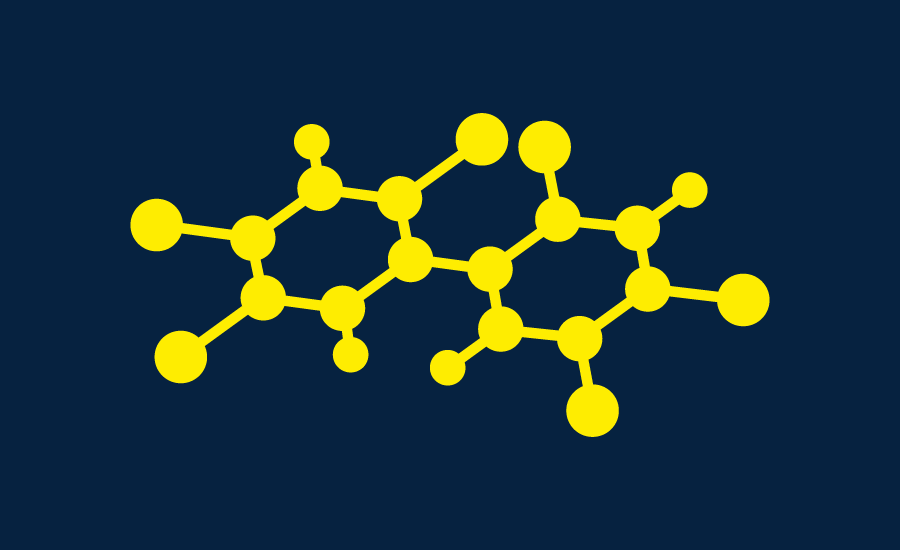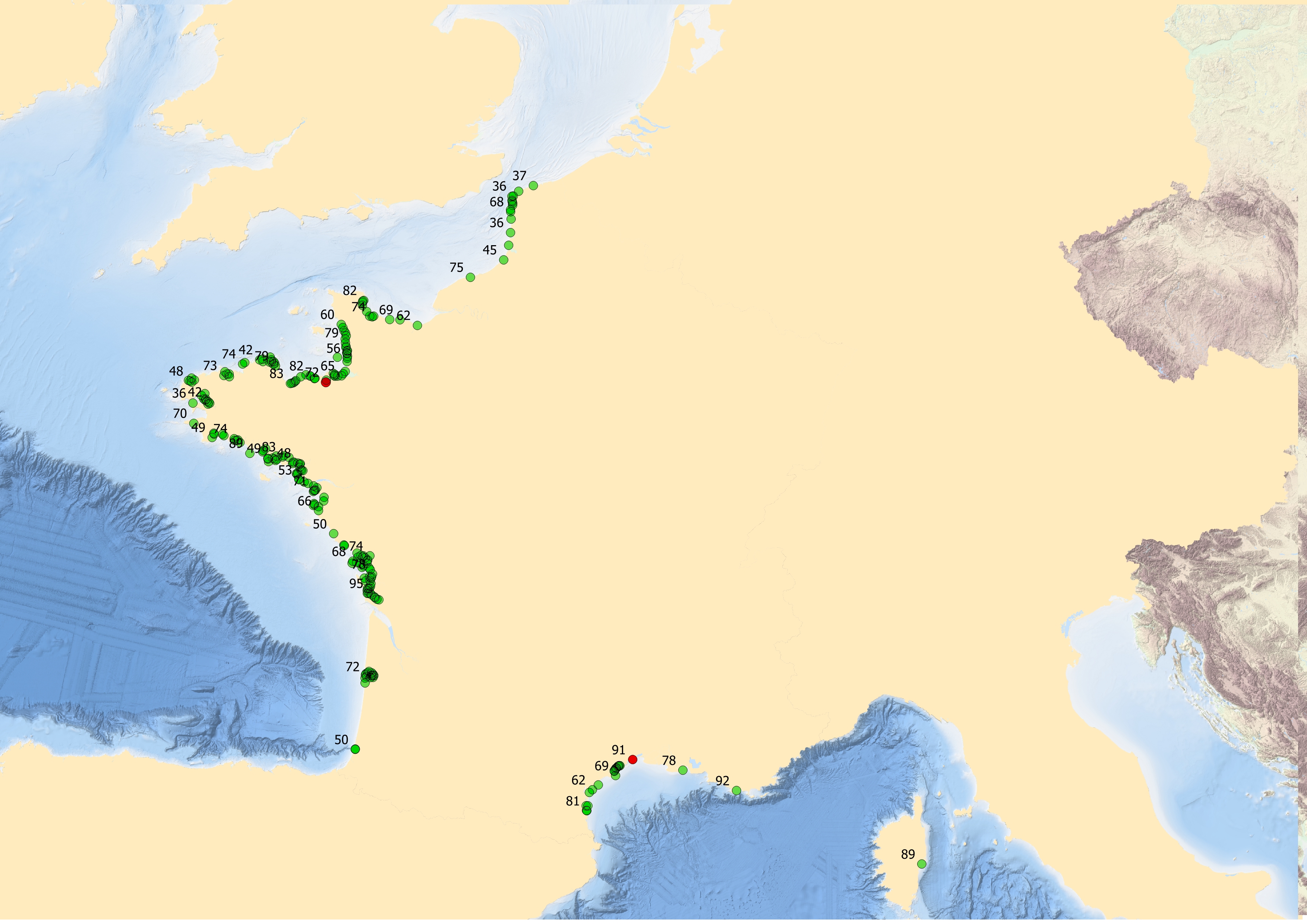contamination
Type of resources
Available actions
Topics
Keywords
Contact for the resource
Provided by
Years
Formats
Representation types
Update frequencies
status
Scale
Resolution
-

Since 2008, the Coastal Chemical Contamination Observation Network (ROCCH) has taken over from RNO (French National Observation Network for Quality in Marine Environments), which had existed since 1974. ROCCH aims to meet national, community and international obligations relating to monitoring chemicals in marine environments. It is therefore more of a control network than a heritage network as RNO once was. The backbone of ROCCH is to apply the European Water Framework Directive (WFD) and to meet the obligations set out in OSPAR Conventions and in Barcelona. As the WFD insisted on decentralization, ROCCH has gone from having just one project leader (the Ministry for the Environment) to having many decision-makers (water agencies, DIREN etc.). Chemical analyses are no longer conducted by IFREMER alone, but are attributed to other partners following calls for tender. ROCC also includes the monitoring of chemicals in shellfish production areas for the Food safety agency (DGAL) and the Ministry for Agriculture and Fisheries. Monitoring focuses on the three regulated metals: mercury, lead and cadmium in the given areas. Monitoring of these chemical contaminants is conducted in the three marine matrices: water, biota and sediment. Testing also includes imposex, the biological effect of tributyltin (TBT), as required by the OSPAR convention.
-

This data set presents the resulting assessment grid (based on the EEA reference grid) with the classification of chemical status of the transitional, coastal and marine waters in the context of the Water Framework Directive (WFD) and the Marine Strategy Framework Directive (MSFD), providing a mapping of contamination 'problem areas' and 'non-problem areas' based on measurements of biological effects. This classification has been performed using the CHASE+ tool, with classifications of the of contaminant status of indicators of biological effects. The status is evaluated in five classes, where NPAhigh and NPAgood are recognised as ‘non-problem areas’ and PAmoderate, PApoor and PAbad are recognised as ‘problem areas’. Monitoring biological effects is restricted to a few indicators (e.g. imposex) and data coverage is currently limited. Biological effects have thus been addressed in only 134 assessment units, mostly in the Baltic Sea, the North Sea and the North-East Atlantic Ocean. This data set underpins the findings and cartographic representations published in the EEA report “Contaminants in Europe’s seas” (No 25/2018). See the mentioned report for further information.
-

This dataset presents the resulting assessment grid (based on the EEA reference grid) with the classification of chemical status of the transitional, coastal and marine waters in the context of the Water Framework Directive (WFD) and the Marine Strategy Framework Directive (MSFD). This classification has been performed using the CHASE+ tool, with classifications of the matrices ‘water’, ‘sediment’ and ‘biota’ and indicators of ‘biological effects’, as well as an integrated classification of chemical status, combining results of all matrices. The chemical status is evaluated in five classes, where NPAhigh and NPAgood are recognised as ‘non-problem areas’ and PAmoderate, PApoor and PAbad are recognised as ‘problem areas’. The overall area of interest used is based on the marine regions and subregions under the Marine Strategy Framework Directive. Additionally, Norwegian (Barent Sea and Norwegian Sea) and Icelandic waters (’Iceland Sea’) have been added (see Surrounding seas of Europe). Note that within the North East Atlantic region only the subregions within EEZ boundaries (~200 nm) have been included. This dataset underpins the findings and cartographic representations published in the report "Contaminants in Europe's Seas" (EEA, 2019): https://www.eea.europa.eu/publications/contaminants-in-europes-seas.
-

This data set presents the resulting assessment grid (based on the EEA reference grid) with the classification of chemical status of the transitional, coastal and marine waters in the context of the Water Framework Directive (WFD) and the Marine Strategy Framework Directive (MSFD), with a mapping of contamination 'problem areas' and ‘non-problem areas’ based on measurements in the matrix 'biota'. This classification has been performed using the CHASE+ tool, with classifications of the biota matrix. The chemical status is evaluated in five classes, where NPAhigh and NPAgood are recognised as ‘non-problem areas’ and PAmoderate, PApoor and PAbad are recognised as ‘problem areas’. Monitoring and assessment for the matrix 'biota' has been carried out in the North-East Atlantic Ocean (482 assessment units), Baltic sea (198 assessment units), Mediterranean Sea (161 assessment units) and Black sea (12 assessment units). This data set underpins the findings and cartographic representations published in the EEA report “Contaminants in Europe’s seas” (No 25/2018): https://www.eea.europa.eu/publications/contaminants-in-europes-seas. See the mentioned report for further information as well as examples of classification excluding specific groups of substances (e.g. metals, PBDEs).
-

The dataset presents the results of classification of eutrophication status of the European seas using the HEAT+ tool. Eutrophication status is evaluated in five classes, where NPAhigh and NPAgood are recognised as ‘non-problem areas’ and PAmoderate, PApoor and PAbad are recognised as ‘problem areas’. Besides the overall Eutrophication status (HEAT+) are the results shown for three aspects of eutrophication: C1) Nutrient Concentrations C2) Direct Effects C3) Indirect Effects This dataset underpins the findings and cartographic representations published in the report "Nutrient enrichment and eutrophication in Europe's seas" (EEA, 2019): https://www.eea.europa.eu/publications/nutrient-enrichment-and-eutrophication-in.
-

This data set presents the resulting assessment grid (based on the EEA reference grid) with the classification of chemical status of the transitional, coastal and marine waters in the context of the Water Framework Directive (WFD) and the Marine Strategy Framework Directive (MSFD), providing a mapping of contamination 'problem areas' and ‘non-problem areas’ based on measurements in the matrix "sediments". This classification has been performed using the CHASE+ tool, with classifications of the sediments matrix. The chemical status is evaluated in five classes, where NPAhigh and NPAgood are recognised as ‘non-problem areas’ and PAmoderate, PApoor and PAbad are recognised as ‘problem areas’. Most countries in Europe include marine sediments in long-term monitoring activities. Consequently, the data coverage is good, especially in southern parts of the Baltic Sea, the North Sea, the Celtic Sea, the Bay of Biscay, western parts of the Black Sea and the coastal waters of France, Italy and Portugal.The number of assessment units monitored and classified in the North-East Atlantic Ocean is 511. In the Mediterranean Sea, the number of assessment units is 153. Baltic Sea sediments are monitored on 97 assessment units while only 19 areas are assessed in the Black Sea. This data set underpins the findings and cartographic representations published in the EEA report “Contaminants in Europe’s seas” (No 25/2018). See the mentioned report for further information as well as examples of classification excluding specific groups of substances(e.g. metals, PBDEs).
-
Le niveau de contaminants dans les tissus comestibles de produits de la mer capturés ou ramassés dans le milieu naturel constitue le critère de définition du descripteur 9 de la DCSMM (D9C1). L’indicateur retenu pour évaluer l’atteinte du bon état écologique pour ce critère (9.1.1) correspond aux niveaux réels des contaminants chimiques qui ont été détectés et le nombre de ces contaminants pour lesquels les teneurs maximales réglementaires ont été dépassées, pour la période comprise dans le cycle DCSMM (2010-2015). Le bon état écologique est atteint pour un contaminant si sa concentration dans la matrice utilisée (espèces et tissus) respecte la limite maximale réglementaire. Les unités géographiques d’évaluation sont les zones de capture ou de production définies conformément à l’article 38 du règlement n°1379/2013 du Parlement et Conseil européen. Les données sont présentées sous la forme de fichiers de type shapefile. L’évaluation des contaminants a été effectuée sur des mollusques bivalves, en pg par kg de poids frais pour les dioxines et furanes. Pour l'évaluation 2018, le bon état écologique pour les dioxines et furanes est considéré comme atteint pour les quatre sous-régions marines considérées.
-

La qualité des eaux de baignade et des produits de la mer destinés à la consommation humaine pour les contaminants microbiologiques est le critère national de définition du descripteur 9 de la DCSMM (9.2). Un des indicateurs retenus pour évaluer l’atteinte du bon état écologique pour ce critère (9.2.1) correspond aux niveaux de contamination microbiologique détectés et au nombre de dépassements des limites maximales pour E.coli dans les mollusques bivalves vivants, pour la période comprise dans le cycle DCSMM (2010-2015). Le bon état écologique est atteint pour un agent pathogène si sa concentration dans la matrice utilisée (espèces et tissus) respecte la limite maximale réglementaire. Les unités géographiques d’évaluation sont les zones de capture ou de production définies conformément à l’article 38 du règlement n°1379/2013 du Parlement et Conseil européen. Les données sont présentées sous la forme de fichiers de type shapefiles. L'unité de mesure de la concentration en E.coli dans les mollusques bivalves est le nombre le plus probable pour 100g de chair de liquide intra-valvaire.
-
Le niveau de contaminants dans les tissus comestibles de produits de la mer capturés ou ramassés dans le milieu naturel constitue le critère de définition du descripteur 9 de la DCSMM (D9C1). L’indicateur retenu pour évaluer l’atteinte du bon état écologique pour ce critère (9.1.1) correspond aux niveaux réels des contaminants chimiques qui ont été détectés et le nombre de ces contaminants pour lesquels les teneurs maximales réglementaires ont été dépassées, pour la période comprise dans le cycle DCSMM (2010-2015). Le bon état écologique est atteint pour un contaminant si sa concentration dans la matrice utilisée (espèces et tissus) respecte la limite maximale réglementaire. Les unités géographiques d’évaluation sont les zones de capture ou de production définies conformément à l’article 38 du règlement n°1379/2013 du Parlement et Conseil européen. Les données sont présentées sous la forme de fichiers de type shapefile. L’évaluation des phytotoxines a été effectuée sur des mollusques bivalves, en μg par kg de poids frais pour les azaspiracides. Pour l'évaluation 2018, le bon état écologique pour les azaspiracides et les autres toxines lipophiles suivies est considéré comme non atteint pour les quatre sous-régions marines évaluées.
-
Le niveau de contaminants dans les tissus comestibles de produits de la mer capturés ou ramassés dans le milieu naturel constitue le critère de définition du descripteur 9 de la DCSMM (D9C1). L’indicateur retenu pour évaluer l’atteinte du bon état écologique pour ce critère (9.1.1) correspond aux niveaux réels des contaminants chimiques qui ont été détectés et le nombre de ces contaminants pour lesquels les teneurs maximales réglementaires ont été dépassées, pour la période comprise dans le cycle DCSMM (2010-2015). Le bon état écologique est atteint pour un contaminant si sa concentration dans la matrice utilisée (espèces et tissus) respecte la limite maximale réglementaire. Les unités géographiques d’évaluation sont les zones de capture ou de production définie conformément à l’article 38 du règlement n°1379/2013 du Parlement et Conseil européen. Les données sont présentées sous la forme d'un fichier de type shapefile. L’évaluation des contaminants a été effectuée sur des mollusques bivalves, en mg par kg de poids frais pour le cadmium. Pour l'évaluation 2018, le bon état écologique pour le cadmium est considéré comme atteint pour la sous-région marine Méditerranée Occidentale et non atteint pour les sous-régions marines Golfe de Gascogne, Mer Celtique et Manche-Mer du Nord.
 Catalogue PIGMA
Catalogue PIGMA